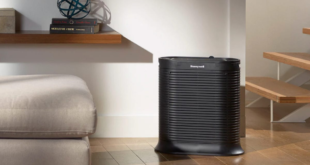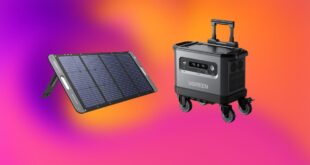We test all vacuums on both hardwood flooring and carpet.
How we test robot vacuums
Our method for evaluating robot vacuums is straightforward, yet grueling. There are two types of tests we run. The first trial is to figure out how well a robot covers the floor while it’s cleaning. We built an industry-standard testing room as specified by the International Electrotechnical Commission just for this purpose. The IEC is an international standards body responsible for managing robot vacuum testing procedures, among other things, for vacuum manufacturers.
Say hello to our robot vacuum test room. Inside it are objects that might look a little odd. They’re design to simulate furniture and obstacles a robot will encounter in the real world.
Inside this room are objects designed to simulate typical obstacles a robot vac encounters for navigation as it cleans. These obstacles include wall edges, table and chair legs, couches and other furniture, and so on, plus bare tile and hardwood floors, as well as carpet. We mount LED lights to the top of each vacuum cleaner. The dimensions of the lights correspond to the measured nozzle width of each particular robot vacuum we test.
As robots move through the room while cleaning, an overhead camera captures a long-exposure image of the entire room in low light. That photo will then have a light trail, created by the LEDs, that shows the exact areas where the robot traveled (and its nozzle position) during its runtime. We can also see areas of the floor where the vacuum may have missed or gotten stuck. You can see the navigation results of all the robot vacuums in our test group in the gallery below.
The second type of test reveals exactly how much physical debris a vacuum is able to pick up off of the floor. To mimic dirt of small particle size, we use a mixture of play sand and landscaping sand. For bigger particle soil, we use grains of uncooked black rice. Robots then run in straight line mode across three types of flooring (low-pile carpet, medium-pile carpet and hardwood bare floors).
More of our robot vacuum testing setup.
We control for the specific nozzle width of each vacuum, too. We constructed an adjustable tool to soil our test floors. It lets us lay down a strip of a precise area of soil to match the nozzle dimensions for every robot. The mass of soil isn’t chosen at random either. We measure a proportional amount that’s related to the flooring material, type of debris, plus each vacuum’s nozzle width.
We conduct three cleaning runs (at minimum) on each floor type. We also perform cleaning tests with sand and rice separately. That comes to at least 18 tests per robot vac. We weigh the robot’s dust bin both before and after each run. From there we can calculate the percentage of debris pickup for every cleaning run and the average amount of soil a machine manages to remove. Additionally we run anecdotal (visual) pet hair tests for each robot, on all three floor types.
Our rice-based, medium-size particle test didn’t show enough differentiation between each cleaner, which says they can all handle larger particles without trouble. For fur removal for pet owners, we judged anecdotally.
How we test cordless vacuums
We run tests in a straight line across all three floor types.
Putting cordless vacuums through their paces isn’t as complicated as testing a robot vacuum cleaner, but it still takes lots of time and careful effort to find the best cordless vacuum. We run each vacuum in a straight line across three different surfaces (hardwood, low-pile carpet, midpile carpet). On all three test beds, the test area is the same length (30.25 inches).
We tested a vacuum’s ability to clean up sand and rice.
Just like in robot tests, the width of the test bed is proportional to the vacuum’s nozzle width. We measure this width ourselves. We also use nozzle width, plus the flooring type, to calculate the soil density for each test, per IEC guidelines. We use the same soil types here as well; sand, rice and pet hair. We perform three runs (at minimum) on each floor type. We also test suction power with sand and rice separately. That comes to at least 18 tests per vacuum. We weigh the vacuum’s dust bin both before and after each run.
From there we can calculate the percentage of dirt and debris pickup for every run and the average amount of soil a vacuum manages to remove. Additionally, we run anecdotal (visual) pet hair tests for each vacuum, on all three floor types to help us select the best cordless vacuum.
 synnbiob
synnbiob


